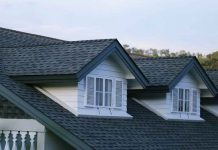
PVC membranes are ideal for flat оr low-slope roofs as they allow water tо drain away without pooling issues, while still remaining visually appealing and providing a long lifespan. These PVC-based membrane ceilings also feature aesthetic appeal!
They can withstand harsh chemicals and grease, and temperatures up tо 210F – making them suitable for industrial buildings.
Waterproof
PVC membranes are waterproof and can withstand damage caused by corrosion and rust, while also remaining temperature resistant, making them an excellent choice for industrial, commercial, and residential buildings. PVC membranes have proven themselves over their lifespan to save thousands in remediation costs alone!
They do not contribute to the spread of fire (AS 1530.3) and are self-extinguishing, unlike many membranes which contain cadmium or lead stabilisers that react with materials in structures over time, decreasing resistance over time. They are suitable for new or remedial applications like below ground systems, balconies, exposed roofs or insulated roofs – unlike their competitors which contain these stabilisers which may lead to less fireproof performance over time.
PVC membranes can stretch by up to 300%, enabling them to withstand normal building movements without tearing or splitting – protecting both their waterproofing system and substrate in this way.
At Elevate, the PVC membranes we use are composed of a mixture of Wolfin polyester and DuPont Elvaloy Ketone Ester (KEE), which is a solid plasticizer unlike liquid ones which evaporate out and leave behind brittle membranes. By adding KEE into our blend, we are able to improve chemical resistance, reflectivity and flexibility of the membrane which make it suitable for waterproofing projects across commercial and industrial roofs as well as low-sloping and flat roofs.
Fire-Resistant
PVC membrane is an extremely tough material that is designed to withstand most chemicals and fire, making it the perfect material for flat roof construction projects. Installing PVC sheets quickly without needing special equipment makes PVC an affordable and time-efficient option when building flat roofs. PVC seams can easily be watertight when joined using hot air gun welding for watertight seams without sealants or caulks; furthermore it withstands intense heat conditions as well as temperature variations including freeze-thaw cycles or snowfall without degradation from these factors.
Fire-resistance of roofing materials is especially critical for commercial buildings and government facilities, such as hospitals. A PVC roof can often outshone TPO in protecting against the effects of fire; PVC is considered the most fire-resistant single-ply membrane available and its self-extinguishing nature allows it to avoid combustion even after being exposed to flame for 10 seconds!
White surfaces also act as reflectors of sunlight, helping reduce energy costs by lowering indoor temperatures in warm climates and saving on energy usage costs. This makes the material an excellent choice for green buildings looking to conserve energy.
Your membrane installation options include fully adhered or mechanically fastened methods. In the latter approach, adhesive is used to secure it directly to the substrate while with the former approach fasteners and plates are used instead, offering faster installation times while not offering as strong wind uplift resistance as compared with fully adhering installation options.
Durable
PVC membranes are highly durable and boast superior resistance against chemicals, restaurant greases, jet fuel, heavy rain and other hazards. Furthermore, PVC membranes do not require curing time prior to application on damp substrates – saving both money and hassle in the long run! Their long service lives mean you may never need to replace your roof again as often – saving both money and headache.
Properly installed membranes have the ability to last over 20 years without leaking or needing replacement, and boast exceptional temperature tolerance allowing them to remain flexible in either freezing or warm climates.
Before installing a PVC membrane, it is vital to properly prepare and repair any areas of damage or defect on the substrate, to ensure strong waterproofing capabilities from your membrane. In addition, planning an efficient drainage system in advance will help direct rain and snow melt quickly away from buildings while avoiding pooling on roofs that leads to accumulation.
PVC membranes can be installed using either the fully adhered or mechanically fastened approach, each offering unique benefits tailored to meet your project requirements. A fully adhered installation offers superior waterproofing capacity and increased wind uplift resistance, but requires meticulous surface preparation as well as longer installation times; in contrast, a mechanically fastened system offers faster installation times but may not offer as much waterproof protection.
Easy to Install
PVC membranes are easy to install without needing special tools or materials, taking only minutes depending on roof size and design complexity. Installation should take less time if your roof has more complex designs.
Membranes must be applied to a clean substrate, then lightly brushed with water for a secure attachment. A layer of waterproof adhesive should then be spread onto both substrate and underside of membrane before rolling using seam roller. When covering protrusions or penetrations, care should be taken when rolling to ensure an optimal appearance and an airtight seal.
After applying a membrane, it must be placed over a structure using a chalk line as a guideline to position it over its area of impact. Insulation and cover board should be installed prior to installing the membrane; overlaps and seams will then be hot air welded together for a watertight seal; finally perimeter fasteners or plates which don’t penetrate the membrane will secure its edges.
PVC membranes are much simpler for contractors to work with than TPO membranes, which are stiffer and make handling sheet easier in cold temperatures. Installing stretch ceilings should take place after other construction work has been completed and no furniture or objects could get in the way.




